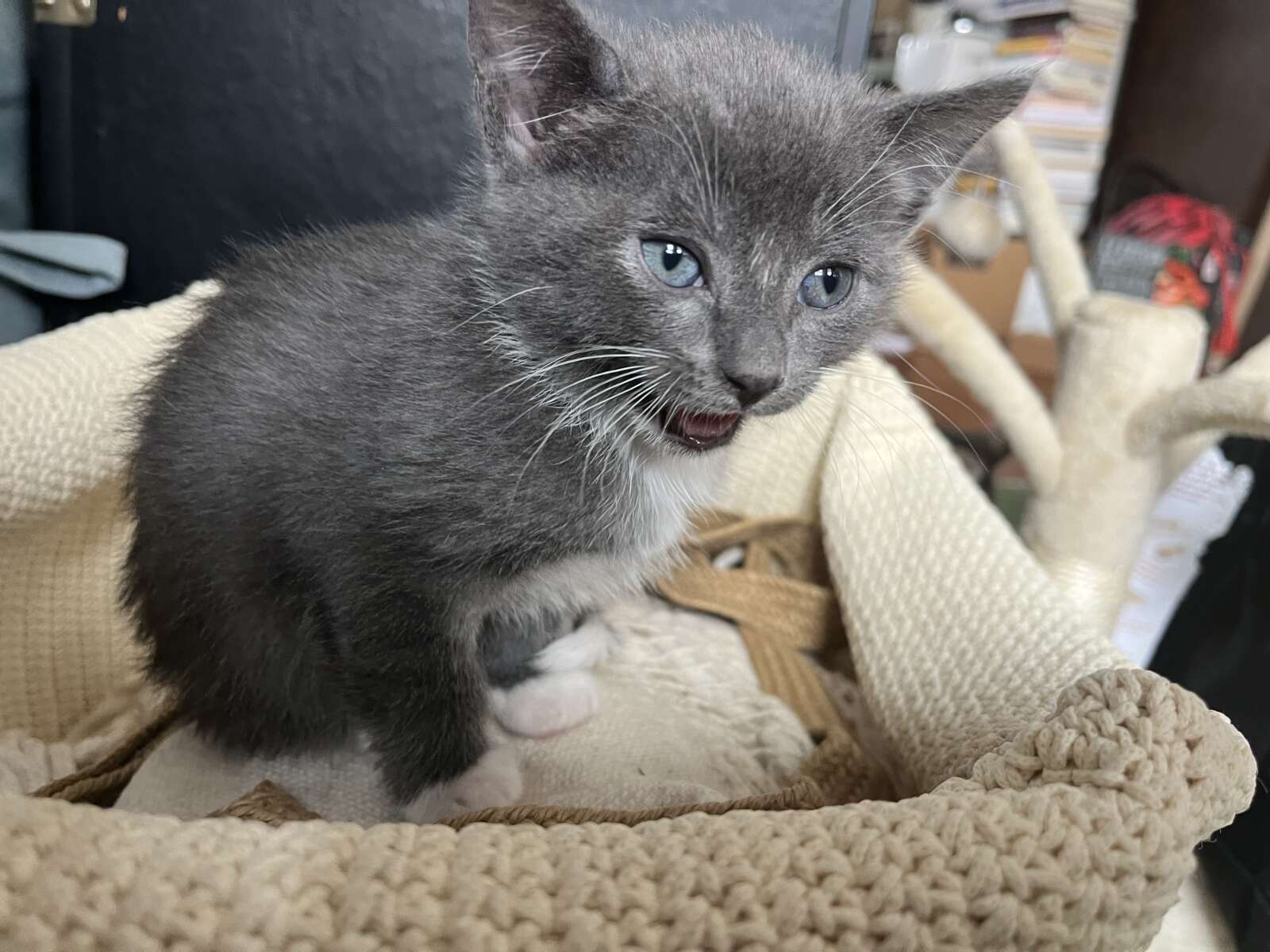
This is a sponsored post by veterinarian Elizabeth Arguelles, owner of Just Cats Clinic at Lake Anne Plaza. She writes weekly on Reston Now.
Hyperthyroidism, a disorder that frequently affects middle age to senior cats, is marked by the overproduction of the T4, or thyroid hormone. As with any condition that causes an over or underproduction of hormones, hyperthyroidism can cause a number of problems. Fortunately, there are a variety of treatment options that either treat or even cure your cat’s hyperthyroidism.
If left untreated, hyperthyroidism can cause a variety of problems. First, the enlargement of the thyroid gland can result in a malignant tumor. Fortunately, this happens in only 2 percent of cats with hyperthyroidism. Second, hyperthyroidism causes the cat’s heart to beat faster and more forcefully, which can lead to enlargement of the heart, thyrotoxic cardiomyopathy, or high blood pressure. About 25% of cats with hyperthyroidism subsequently develop high blood pressure.
What are the symptoms of hyperthyroidism?
Weight loss, despite increased appetite and food intake, is the most common indicator of hyperthyroidism. Approximately 98 percent of cats with the condition show weight loss. Be aware, however, that some cats lose weight suddenly, while others do so gradually. In the latter cases, it is possible that you will not immediately notice what is happening.
Other symptoms include excessive thirst, urination, and unkempt fur. In about 50 percent of cats affected by hyperthyroidism, vomiting and diarrhea occur.
How is hyperthyroidism diagnosed?
The first step is to have your cat examined by your veterinarian to check for weight loss, condition of fur, and overall health. Additionally a full panel of blood work including a measure of the total thyroxine (TT4) and a urinalysis should be pulled to aid in diagnosis since many of the symptoms of hyperthyroidism are similar to other diseases.
In most cases of hyperthyroidism, the amount of this thyroid hormone is so large that diagnosis is straightforward. In some cases, though, the TT4 levels may come back as borderline normal. When that happens, your vet will perform either a Free T4 by Equilibrium Dialysis (FT4 by ED) or a T3 suppression test. If even those do not result in a clear diagnosis, your vet might suggest performing a thyroid scan or measuring the TT4 after a few weeks.
How is hyperthyroidism treated?
There are three possible ways of treating this condition. You and your vet can determine which one is right for your cat after doing a full evaluation of its health, lifestyle, and your budget. Once hyperthyroidism is initially diagnosed, additional tests may be needed depending on the general health of your cat like chest x-rays, ECG, and/or blood pressure check. Your vet might also recommend a cardiac ultrasound or echocardiogram if there is any concern that the heart has been affected.
Here are the three different methods of treatment:
- Oral medication (treatment): Oral administration of Methimazole has been highly effective in correcting the condition, often in a very short time. This drug suppresses excessive thyroid hormone production rather than destroying the abnormal thyroid cells. However, it’s important to remember this treatment is only effective if your cat takes the medication regularly without missed doses. Additionally routine lab work would be needed to monitor your cat’s thyroid levels to maintain the correct dose for the rest of its life. The medication comes in pill form and can be compounded into either a liquid or transdermal form. Also, approximately 20% of cats suffer side effects such as loss of appetite, vomiting, lethargy, blood clotting and in rare cases, a decrease in blood platelets (thrombocytopenia).
- Radioactive iodine treatment (cure): An injection of radioactive iodine (I131) is given intravenously to destroy the abnormal thyroid tissue without endangering any other organs. This will require about a one week stay of hospitalization at a veterinary hospital that is licensed to administer this type of treatment. Additionally extra precautions with your cat’s litter box will be necessary for a few weeks following the treatment
- Surgery (cure): Another option is to surgically remove the affected thyroid gland. Because middle age to older cats usually develop hyperthyroidism, this method can come with additional risk due to anesthesia. Before proceeding with surgery, your vet will need to assess your cat’s overall health and suitability for the procedure to ensure it’s safe for your cat to undergo the procedure. Some cats will develop an issue with the opposite side and need a second surgery to address it putting them at additional anesthetic risk in the future. While it is a major surgery, hospitalized stay overnight is typically all that’s needed. The TT4 level is first measured about two weeks after the surgery.
For more information please visit our online feline library.





